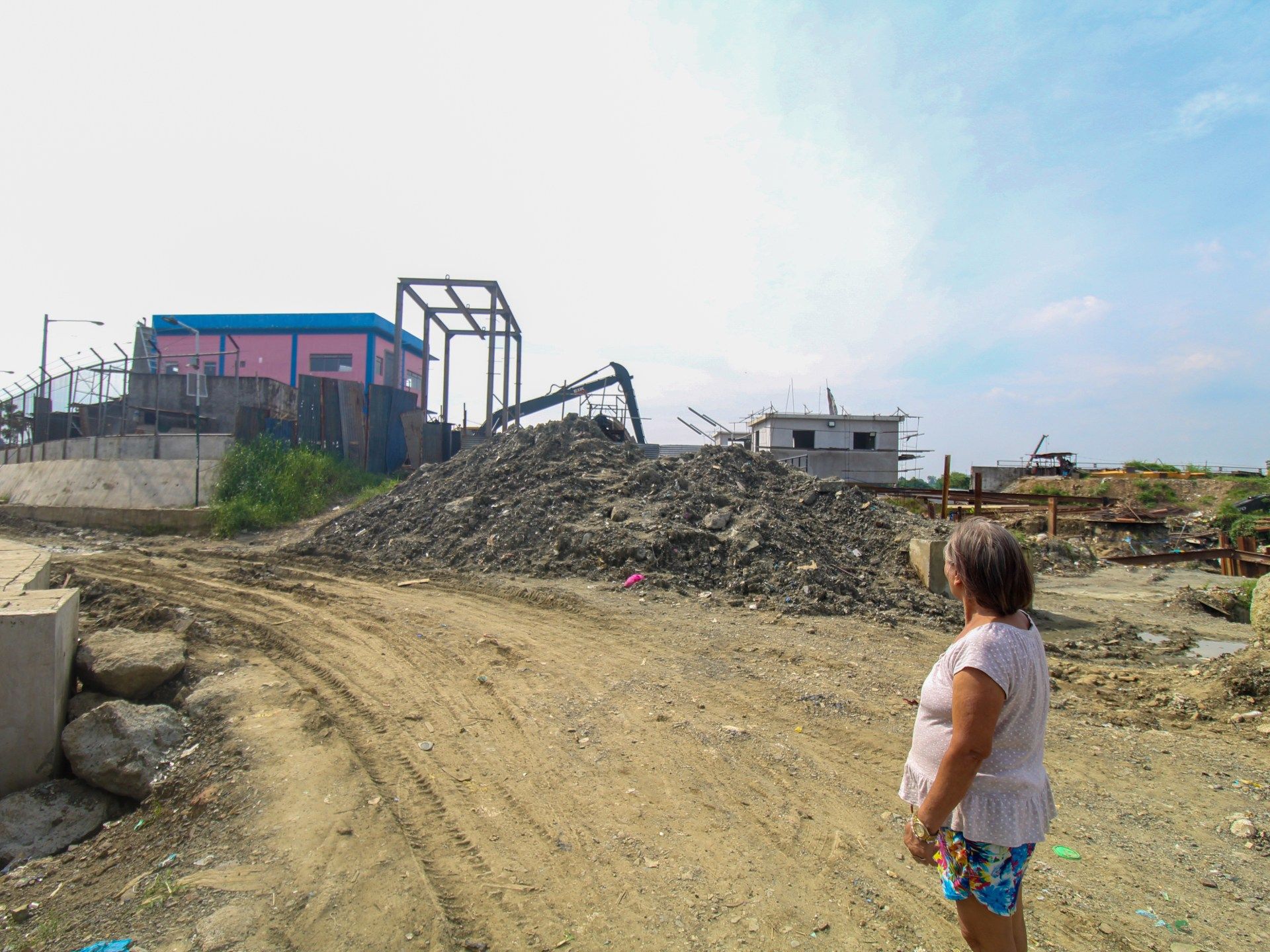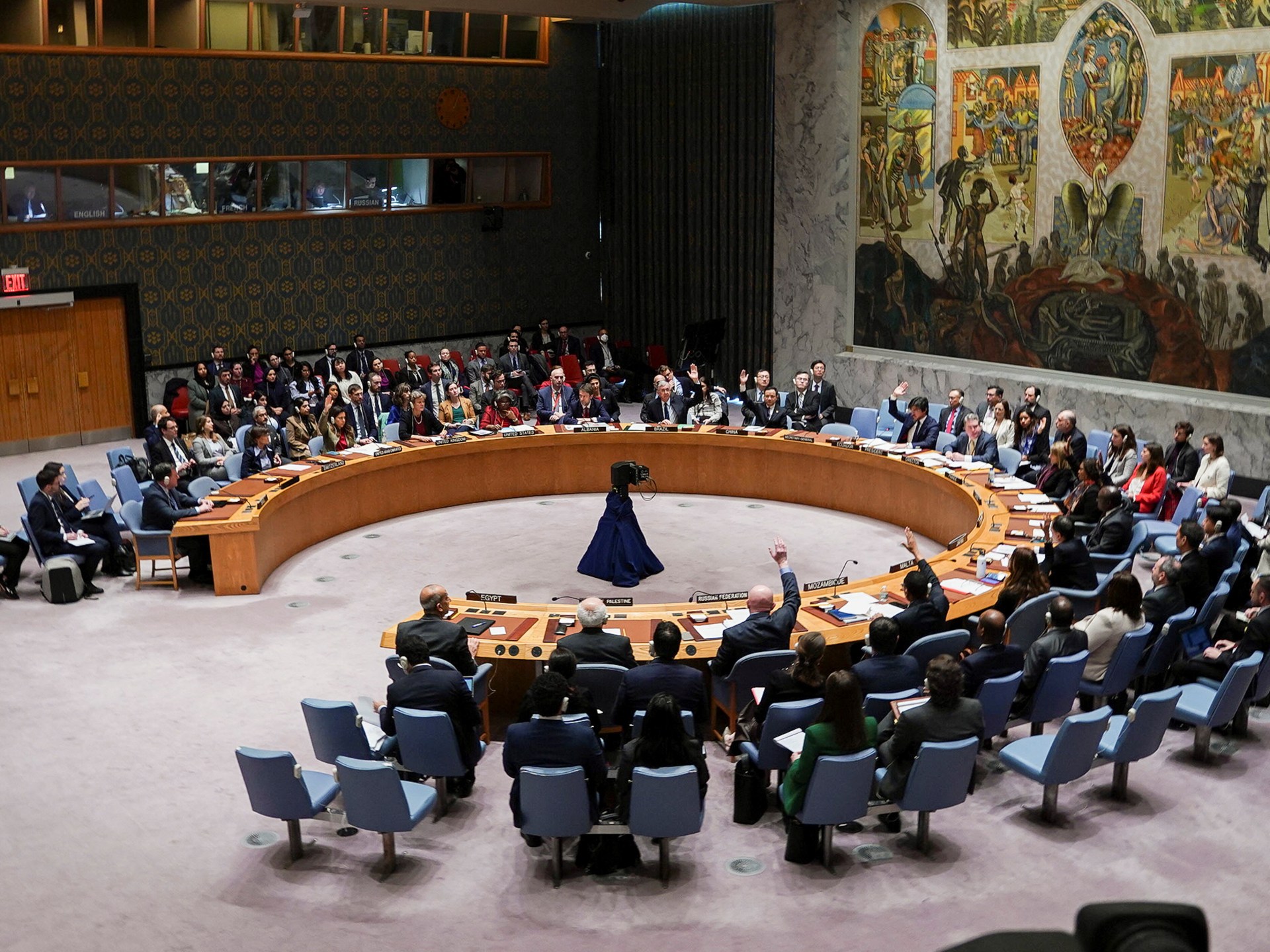Manila, Philippines – Except for a few pieces of laundry hanging out to dry, the first two floors of 65-year-old Veronica Castillo’s three-story home are virtually empty.
“Our belongings are upstairs. We built our houses in that area. Every year the floods reach the ceilings of the second floor,” Castillo told Al Jazeera while inspecting his house in one of the slums in Marikina City, one of the most flood-prone areas in Metro Manila.
But while the government is building a pumping station to solve the problem just five minutes away, construction has been going on for so long that Castillo wonders if it will ever be finished. “It’s been eight years,” he said.
Since taking office in 2022, President Ferdinand Marcos Jr. has spent about half a trillion dollars to address persistent flooding caused by extreme weather in the Philippines. But despite that significant spending, cities continue to flood in a country that typically experiences about 20 typhoons a year.
During a speech in July, Marcos Jr. boasted that his administration had completed more than 5,000 flood control projects, of which 656 were in Metro Manila.
Days later, Super Typhoon Gaemi dumped a month's worth of rain on the area in 24 hours, killing dozens of people and leaving parts of the sprawling city submerged.
Tropical Storm Yagi followed earlier this month. Authorities estimated the cost of damage at 4.7 billion Philippine pesos (US$84.3 million) and that nearly seven million people were affected.
At least a dozen more typhoons are expected before the end of the year.
The Philippines has topped the World Risk Index list of countries having the hardest time coping with natural hazards for 16 consecutive years. According to international engineering group GHD, floods and storms will cost the country $124 billion by 2050.
Some analysts say the government's approach is failing.
“No engineering can fully control flooding,” said environmental geographer Timothy Cipriano of the AGHAM research group and Philippine Normal University. “We may be able to control flooding at street level, but we have neglected river and coastal overflows.”
Cipriano notes that Metro Manila and its 12 surrounding provinces are “a large basin surrounded by coastlines on some sides and mountains on the other, and numerous man-made activities mean that surface runoff increases rapidly and rivers therefore overflow their banks.”
The government currently has nine flagship flood control projects underway, each of which involves building concrete or “grey” infrastructure to drain or trap excess water.
In a public inquiry last August, Department of Public Works and Highways (DPWH) chief Manuel Bonoan said Marcos Jr.'s achievements were only for “immediate relief” and admitted that many big-ticket projects had suffered delays.
Government data shows that only one of the smaller “flagship” projects was completed this year, while the rest have languished in their preparatory stages since at least 2018.
This includes the Metro Manila Flood Management Project, which aims to rehabilitate 36 pumping stations and build 20 new ones by this year. Despite a $415 million loan from the World Bank, only two stations have been rehabilitated and none of the new ones have been completed.
The 60-kilometer (37-mile) waterway between Central Luzon and Pampanga, meant to drain stormwater from Metro Manila, was supposed to begin construction in 2024. But last month, Bonoan admitted that delays had pushed the project back three years.
The DPWH also reported that 70 percent of Metro Manila’s “antiquated drainage system” was clogged with garbage and silt, making flood management difficult. It also reported that the country lacks a national flood control master plan, with only 18 scattered plans for major river basins that are “still being updated.”
Change of perspective
Most flood control measures direct stormwater westward to Manila Bay or Laguna Lake in the southeast. But civil engineering expert Guillermo Tabios III says this approach has been ineffective for many years and sometimes simply transfers flood risks to coastal communities.
“We diverted about 2,500 cubic meters of water to Laguna Lake,” he said, adding that the water also means “many of the surrounding towns will be submerged.”
Cipriano blames rapid urbanization and nearby quarrying for strangling Metro Manila's 31 rivers and their tributaries.

During Gaemi, Merjelda Toralba, 70, spent almost 24 hours on the roof of her makeshift house by the stream. She had to tie a rope from the wooden frame of her door to a coconut tree to prevent the updraft from sweeping the entire house downstream.
“The floods are getting worse every year and every time it rains hard I get more scared. In a few hours, I would be trapped and the waters would not go away,” she told Al Jazeera.
Environment and sanitation expert José Antonio Montalbán, of Pro-People Engineers and Leaders (Propel), says much of the new infrastructure is expensive to maintain.
In Yagi's heavy rains, parts of the Molino Riverdrive project collapsed as floodwaters spilled over roads. Montalban blames inevitable erosion of the cement and poor quality materials, but “it was clearly above its maximum load-bearing capacity. Now repairs will cost taxpayers once again.”
Montalban says what is needed is a “holistic approach” that takes into account “all the economic, ecological, hydrological and social factors. Unfortunately for us, rudimentary engineering applications are the norm.”
During Gaemi, the government admitted that 71 of Metro Manila's pumping stations were unable to handle the rainfall, which was more than double the system's capacity of 30 mm/hour.
Cipriano says authorities should consider flood-prone areas as a “sponge city.” Instead of controlling water, spaces are designed to accommodate it. The idea is to make them not look like a concrete jungle, to allow water to filter through or flow without constricting rivers.
Spender
Since 2015, the Philippine government has allocated 1.14 trillion Philippine pesos ($20.3 billion) for flood control, with 48 percent of that amount during the Marcos Jr. administration.
Independent public budget analyst Zy-za Nadine Suzara says there was likely “clientelistic politics” involved after noticing that flood control was often a last-minute insertion by lawmakers into the national spending plan.

Despite the lack of discussion on designs and methods to address flooding, “suddenly a huge number of flood control projects are added during the last week of budget legislation,” he noted.
Currently, Congress has allocated 779.38 billion Philippine pesos (13.9 billion U.S. dollars) for DPWH flood control efforts in 2025, about 12 percent of the proposed national budget.
Suzara says flood control projects have always been considered prone to corruption because they lack external monitoring mechanisms and often escape any rigorous scrutiny before the budget is finalised.
He called it a “waste of fiscal space. These funds could have been used for something with much better planning for climate change adaptation.”
For 2025, the Marcos Jr. administration has earmarked 1.01 trillion Philippine pesos ($18.1 billion) of the budget for “green spending,” or climate-related spending, an 84 percent increase. This includes a lump sum for climate, meaning its specific use has not been identified. The lump sum was more than 1 billion Philippine pesos more than in 2024.
“Climate change should not be used as an excuse to steal from the people’s coffers,” Congressional Deputy Minority Leader Arlene Brosas told Al Jazeera.
Marcos Jr. acknowledged the stain of corruption and asked senators to investigate the matter during last year's typhoon season.
Senator Joel Villanueva, a staunch advocate for better flood management, said he will “file lawsuits against those who should be held responsible.” To date, no one has been prosecuted. Villanueva says he is preparing to take up the matter again in upcoming Senate proceedings.
Brosas added: “People deserve transparency and accountability when it comes to climate spending. Funds should be channelled towards legitimate climate adaptation programmes, rather than ending up in the pockets of corrupt officials.”
Schools are often used as evacuation centres for flood-affected communities. Classes are postponed so that dozens of families can take shelter in classrooms and survive on food donations.
“It’s hard, lying on wet mats in crowded rooms, hoping for better weather,” said Castillo, who takes her five grandchildren to the nearest evacuation center whenever there is a risk of flooding.
If the government fails to address the flooding problem, residents like Castillo face the prospect of spending many more years crammed into evacuation centers while they wait for the waters to recede.












